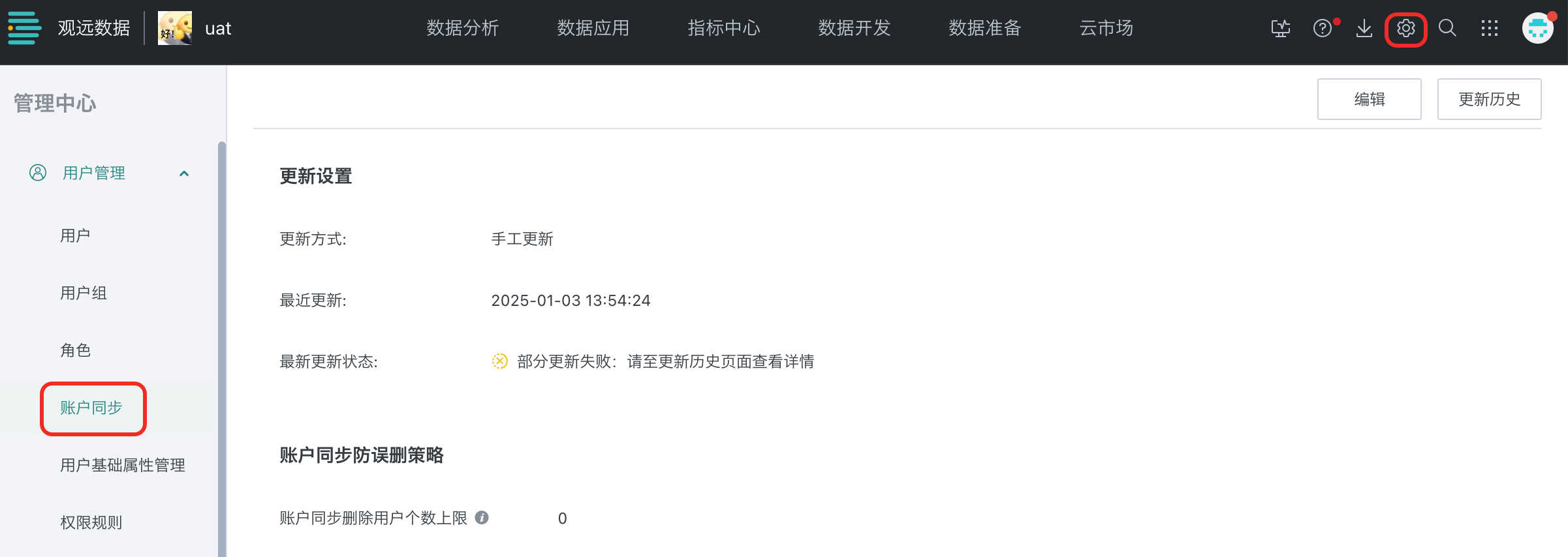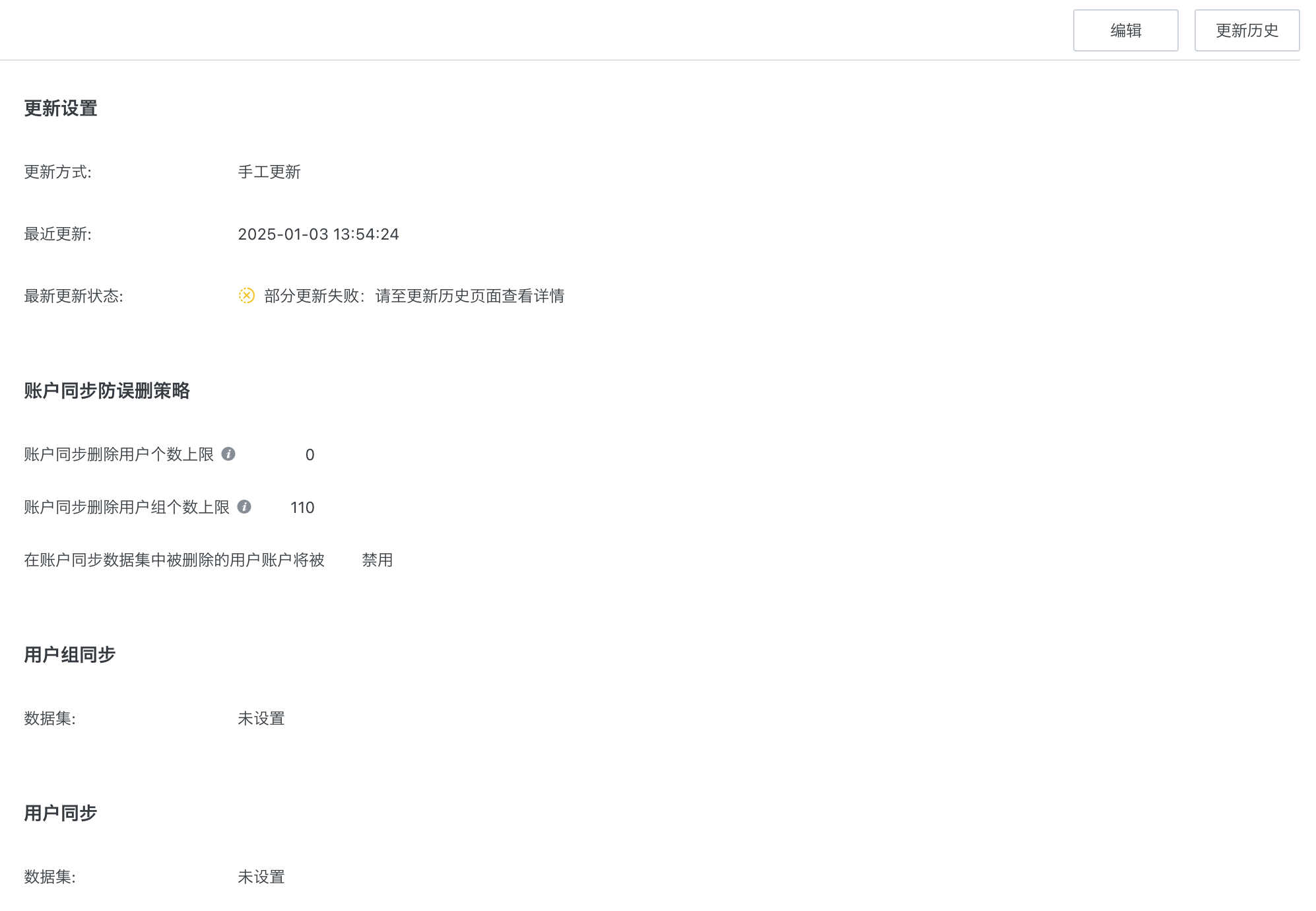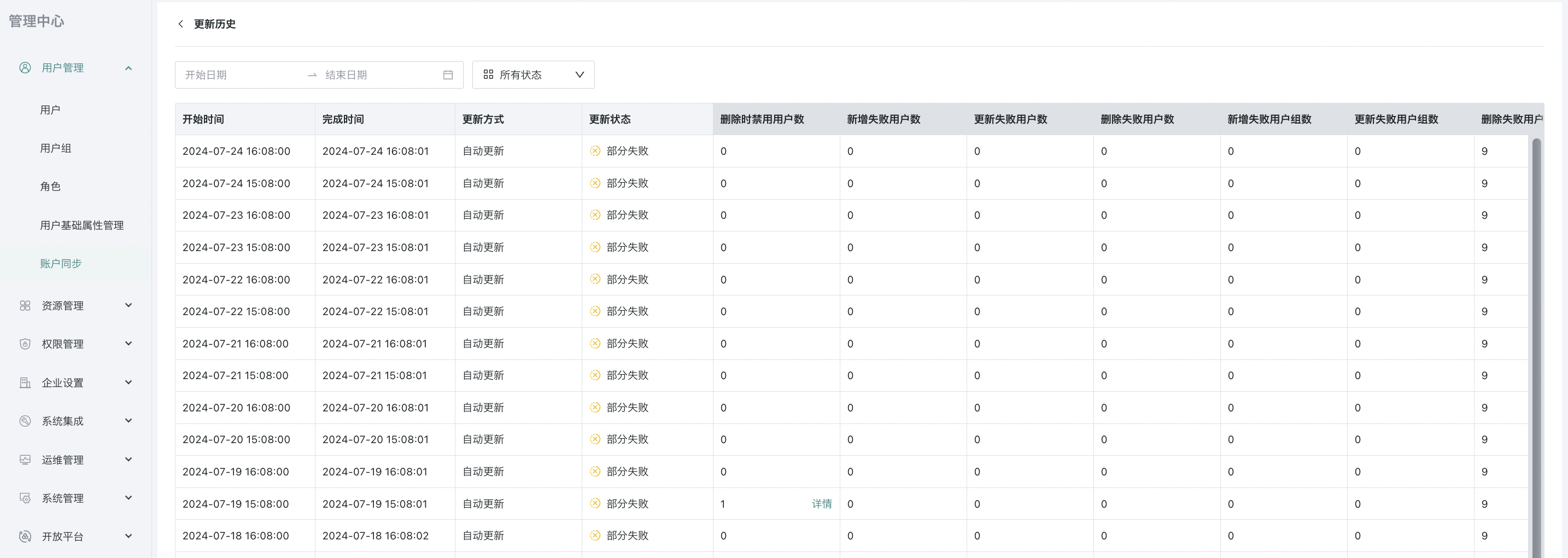Account Synchronization
1. Overview of Account Synchronization
Account synchronization is a function for detailed management of enterprise user accounts, making it convenient for administrators to quickly manage users/user groups. It also allows setting "whether to disable the delete user operation" for information security control to avoid accidental deletion. Enterprise administrators can synchronize Guanyuan Data user information with user lists from other OA systems, making management convenient and efficient. In addition, update history can be viewed for effective behavior recording and tracking.
2. Specific Operations of Account Synchronization
Step 1: Enter "Management Center > Account Synchronization"

Step 2: Edit update settings, anti-deletion policy, user group sync, and user sync

-
Update method: manual or daily;
-
Anti-deletion policy: configure the maximum number of users/user groups that can be deleted in account synchronization, and set whether deleted user accounts are disabled or deleted. If deleted users are set to be disabled, you can view newly disabled users and users disabled upon deletion in the details column of the disabled users in the update history interface;
-
User group sync: select the required dataset during initialization. If a dataset already exists, you can switch or reset it;
-
User sync: select the required dataset during initialization. If a dataset already exists, you can switch or reset it. You can also directly edit user basic information, permission information, third-party account association, and other information on the settings page.
Related Notes:
(1) Reasons for "failure" prompts (the reason will be prompted in the lower right corner):
-
The dataset for account synchronization was deleted and then updated again;
-
The parent ID of the user group does not exist;
-
The parent user group ID for account synchronization is the same as the user group's own ID;
-
The update status column in the update history interface shows "partial failure". The number of failed user groups increases by 1. Click details to see "user group parent ID is incorrect";
-
Failure due to service restart.
-
"data too long for column 'config' at row 1", user attribute field value exceeds character length limit
(2) Reasons for "partial failure" prompts (see update history page for details):
-
User mobile/email is duplicated with an already updated or existing one in the system;
-
New account is duplicated with an existing one in the system;
-
Account type is an illegal string (other than regular user/read-only user/administrator);
-
Editable user count exceeds license limit;
-
Total user count exceeds license limit;
-
Duplicate user accounts;
-
Users/user groups have resources not transferred.
Step 3: Click "Update History" in the upper right corner to view each update record

In the "Account Synchronization" - "Update History" module, each update is recorded. This module includes:
(1) Top filter bar: select start-end date/time range, status (success, failure, partial failure, running).
(2) Detailed list: sync start time, sync completion time, update status, number of users disabled upon deletion, number of users failed to add, number of users failed to update, etc. For failures and partial failures, the reasons and corresponding users/user groups are listed.
-
Failure status provides details and shows the reason for failure (e.g., user dataset has been deleted);
-
Failed to add/update users/user groups provides details and shows the reason for unsuccessful deletion (e.g., user group parent ID is incorrect, user mobile conflict, etc.) and the corresponding list;
-
Failed to delete users/user groups provides details and shows the reason for unsuccessful deletion (e.g., users/user groups still have resources not transferred) and the list of user/user group names;
-
Disabled users: provides detailed lists of users disabled upon addition/deletion. Click the link to jump to the user management - user - disabled interface.
3. Account Synchronization Practice
For more information on user group synchronization, account synchronization practical operations, as well as field explanations and main synchronization process, please refer to [Account Synchronization Practice](../../10-Tips and Best Practices/7-Operation & Maintenance Management/13-Account Synchronization Practice.md).